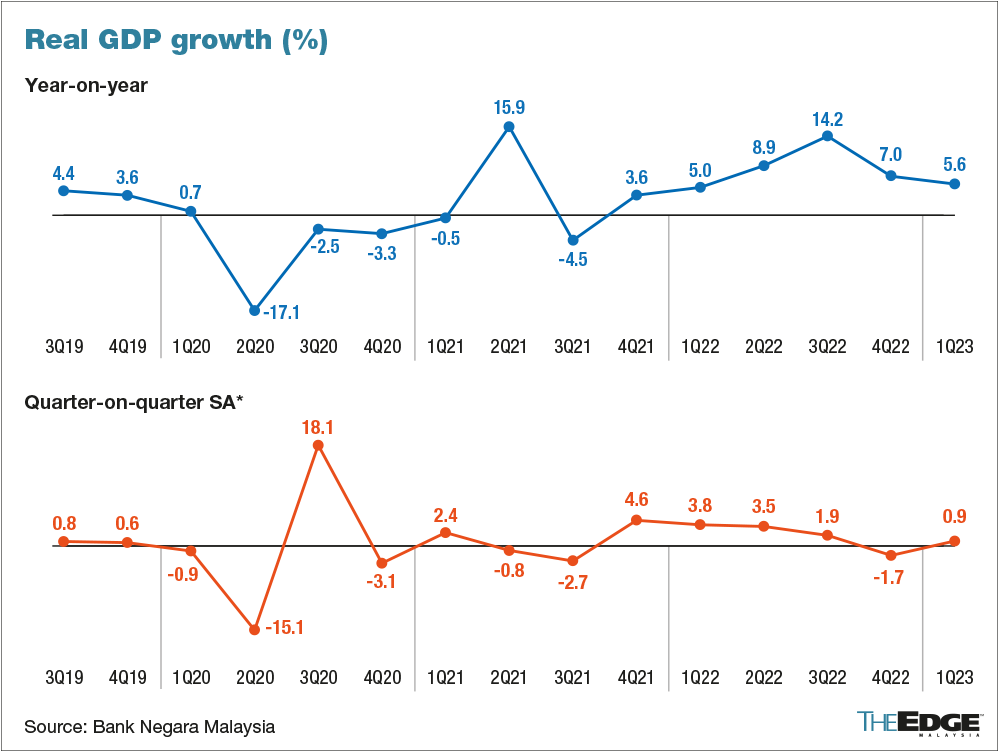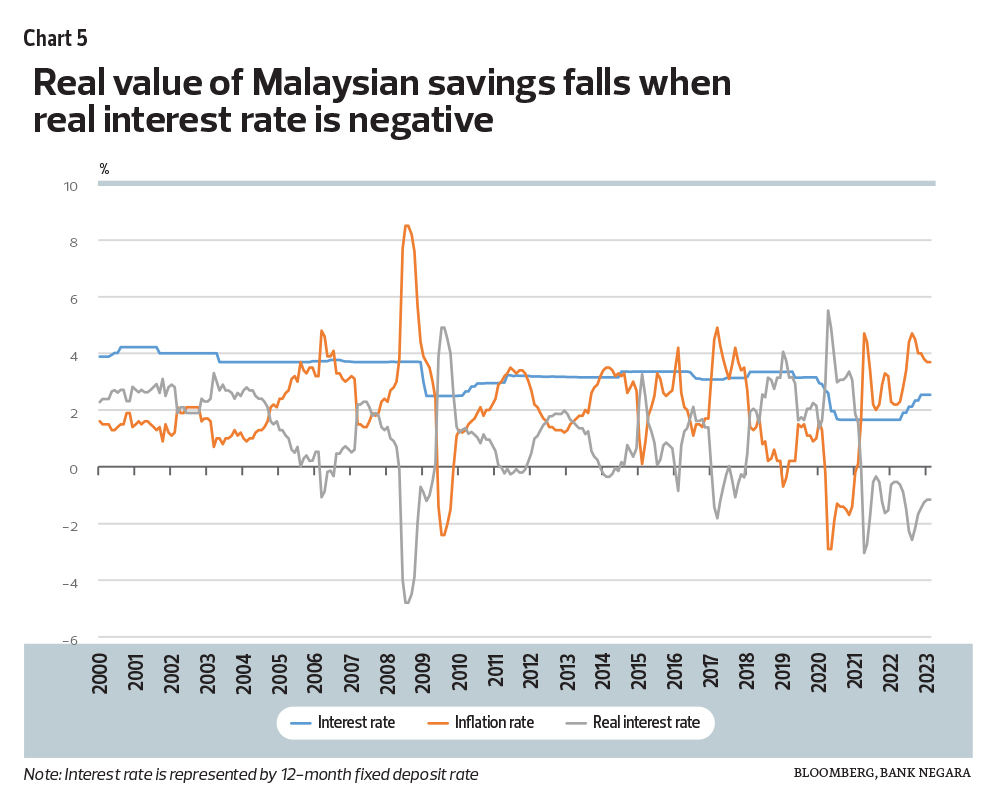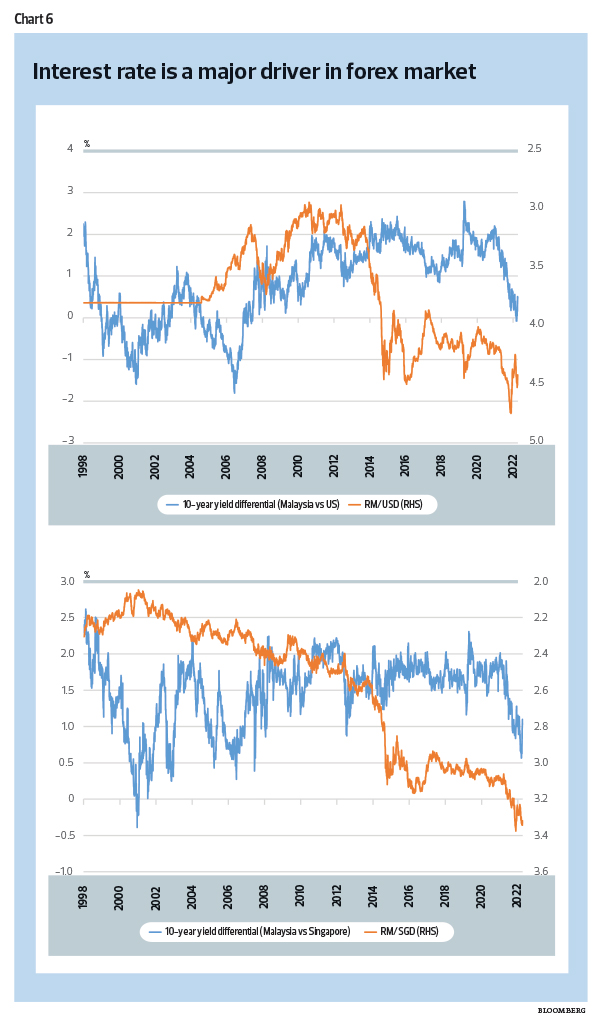Industry outlook – Malaysian property sector
The property market recorded an increase in 2022 supported by a better performance in all sectors compared to the previous year. In 2022, total transactions volume and value increased by 29.5% and 23.6%, respectively to 389,107 transactions and RM179.07 billion (2021: 300,497 transactions and RM144.87 billion). Total transactions volume in 2022 is the highest volume recorded within the period of 10 years (2012: 427,520 transactions) whilst total transactions value is higher than the previous record high in 2014 (RM162.97 billion).
Of the total transactions recorded in the review year, 20.7% (80,373) and 76.5% (297,700) were transfers dated 2021 and 2022 respectively while the remaining percentage share was for prior years’ transfer. Primary market formed 13.8% (53,698 transactions) of the total transactions (purchase from developers) while secondary market took up the remaining 86.2% (335,409 transactions).
The property market continued to record growth in 2022, supported by the implementation of various government initiatives and assistance, improving labour market conditions and higher tourist arrivals. Several initiatives which outlined under Budget 2022 by the government to a certain extent helped improve property market activities. These are:
i. RM1.5 billion allocation for low-income groups housing projects i.e. rumah mesra rakyat and maintenance assistance programmes.
ii. Lifting the imposition of Real Property Gains Tax on the disposal of properties in the 6th year onwards by Malaysian citizens, permanent residents and other than companies.
iii. Guarantees of up to RM2 billion to banks via Skim Jaminan Kredit Perumahan in assisting gig works, small entrepreneurs and farmers in obtaining home financing.
The Overnight Policy Rate (OPR) has increased gradually from the lowest level of 1.75% since May 2022 by 25 basis points each in May, July, September and November 2022 to 2.75%. The Monetary Policy Committee decided to further adjust the degree of monetary accommodation amid positive growth prospects for the Malaysian economy and to reduce inflationary pressures due to strong demand conditions, tight labour markets, and the elevated commodity process, despite some improvements in global supply chain conditions.
On the demand side, loan applications and approvals for residential purchase increased by 28.7% and 48.7% respectively in 2022. Higher levels recorded in 2022 as the data updated in accordance with the latest data definition and requirement. The new application and approval data will be based on real-time application and approval during the month, irrespective of time lag or application withdrawal by customer in the same month.
Though higher growth recorded by the growth trends remain broadly similar. Similarly, loan applications and approval for non-residential purchase also increased at 33.8% and 92.8% respectively.
Volume of transactions across the sub-sectors showed upward movements. Residential, commercial and industrial, agriculture and development land sub-sectors recorded year-on-year growths of 22.3%, 46.3%, 44.5%, 44.6% and 35.7% respectively. Value of transactions moved in tandem with residential, commercial, industrial, agriculture and development land sub-sectors recorded an increase of 22.6%, 16.7%, 24.8%,50.5% and 16.6% respectively.
Residential property
There were 243,190 transactions worth RM94.28 billion recorded in 2022, increased by 22.3% in volume and 22.6% in value as compared with 2021. Secondary market formed about 80.0% (194,749 transactions) of the total transactions while primary market (purchase from developers) formed nearly 20.0% (48,441 transactions).
All states recorded higher market volume except for Labuan which recorded decline in market activity. The uptrend recorded in Pulau Pinang (31.1%), Johor (24.3%), Perak (18.9%), Kuala Lumpur (18.4%) and Selangor (15.9%) supported the overall increase in the sub-sector. Combined, these states formed about 60% of the total national residential volume. Selangor contributed the highest volume and value to the national market share, with 23.2% in volume (56,514 transactions) and 32.4% in value (RM30.58 billion). Kuala Lumpur recorded 13,182 transactions but ranked the second highest in value at RM11.79 billion, contributing 12.5% market share. Demand continued to focus on terraced houses, formed around 42.0% of the total residential transactions, followed by vacant plots (15.1%), high-rise units (15.0%) and low-cost houses/ flats (10.6%). By price category, RM300,000 and below accounted for 55.8% of the total, followed by RM300,001 to RM500,000 (24.2%) and more than RM500,000 (20.0%).
The primary market recorded more than 54,000 newly launched units in 2022. In spite of the increase in new launches, market remained cautious as the numbers were lower than those recorded in the pre-pandemic years.
Sales performance was moderate at 36.0%. Selangor (11,176 units), Kuala Lumpur (10,324 units) and Johor (7,718 units) were the three leading states with higher new launches. Both Kuala Lumpur and Johor recorded better sales performance at more than 40.0% as compared to Selangor, which recorded a lower rate of 26.9%.
Condominium/apartment units dominated the new launches, capturing 45.0% (24,366 units) of the total, followed by terraced houses with 42.2% share, comprised single storey (9,422 units) and two to three storey (13,403 units).
The residential overhang situation improved as the numbers reduced compare to previous year. A total of 27,746 overhang units worth RM18.41 billion recorded in 2022, reduced by 24.7% and 19.2% in volume and value respectively against 2021 (36,863 units worth RM22.79 billion). Johor retained the highest number and value of overhang in the country with 5,258 units worth RM4.33 billion, accounting to 19.0% and 23.5% respectively of the national total. Selangor (3,698 units), Pulau Pinang (3,593 units) and Kuala Lumpur (3,429 units) followed suit. In terms of value, the second highest was Selangor (RM3.36 billion), followed by Kuala Lumpur (RM3.15 billion) and Pulau Pinang (RM2.74 billion). Condominium/apartment formed 61.9% (17,162 units) of the national total overhang, followed by terraced houses (20.3%; 5,636 units). By price range, those priced at RM500,001 to RM1.0 million formed 33.6% (9,323 units) of the total, higher than 30.2% in 2021.
Price range between RM300,001 and RM500,000 came second, accounting for 29.3% (8,128 units).
Meanwhile, houses in the affordable price range of below RM300,000 formed another 23.5% (6,509 units) of the total and followed by more than RM1.0 million price range formed 13.6% (3,786 units). The unsold under construction improved as the numbers dropped to 57,649 units (2021: 70,231 units), declined by 17.9% meanwhile unsold not constructed recorded sharply decrease by 49.7% in number with 11,053 units (2021: 21,960 units).
Commercial property
The sub-sector recorded a further increase in market activity in 2022. There were 32,809 transactions worth RM32.61 billion recorded in 2022, increased by 46.3% in volume and 16.7% in value as compared with 2021 (22,428 transactions worth RM27.94 billion). The increase in all states and major transactions involving shopping complex and purpose-built office recorded in the review period contributed to the overall improved market. Selangor contributed the highest volume and value to the national market share, with 26.4% in volume (8,654 transactions) and 31.7% in value (RM10.35 billion). Kuala Lumpur came second with 14.6% in volume (4,777 transactions) and 26.0% in value (RM8.49 billion) and Johor with 14.6% in volume (4,787 transactions) and 14.0 % in value (RM4.57 billion).
Shop segment recorded 16,862 transactions worth RM14.2 billion, dominating 51.4% of the commercial property transactions volume and 43.5% of the total value. Market activity recorded an increase of 45.7% in volume and 48.2% in value (2021: 11,574 transactions worth RM9.6 billion). Selangor contributed the highest volume and value to the market share, with 19.0% (3,207 transactions) and 29.9% of the total value (RM4.2 billion) followed by Johor with 17.1% (2,880 transactions) and 16.3% of the total value (RM2.3 billion). By type, two to two and a-half storey shops captured more than 53.0% (8,970 transactions) of the shops’ market share, followed by three to three and a-half storey shops, registering 27.4% share (4,628 transactions). Shop overhang segment increased to 6,720 units with a value of RM5.84 billion, up by 1.6% in volume and up 1.1% in value against 2021. The unsold under construction and not constructed saw the reverse, down by 28.8% (2,777 units) and 9.0% (365 units). Johor accounted for nearly 26.0% of shop overhang volume and 28.7% in value (1,731 units worth RM1.67 billion) and the unsold under construction with 36.2% share (1,005 units).
Industrial property
The industrial sub-sector recorded 8,082 transactions worth RM21.16 billion in 2022. Compared to 2021, the market activity increased by 44.5% in volume and 24.8% in value. Selangor continued to dominate the market, with 33.8% of the nation’s volume, followed by Johor and Perak, each with 14.0% and 8.1% market share.
The industrial overhang remained manageable. The overhang volume decreased to 880 units worth nearly RM1.15 billion, down by 22.1% volume and 27.6% in value against 2021. On similar note, the unsold under construction decreased to 450 units, down by 31.2%. The unsold not constructed recorded 51 units, more than 22 units recorded in 2021. Sarawak held most of the overhang, with 33.8% share, followed by Johor (23.3%) and Pulau Pinang (9.7%). By type, terraced and semi-detach units formed the bulk of the overhang, each with 59.2% and 29.8% share. Most of the overhang were above RM1 million, forming 45.2% of the national total.
The property market is expected to continue its momentum with various initiatives outlined by the government under the revised Budget 2023. Among others:
1. Full stamp duty exemption on instrument of transfer and loan agreement for the purchase of the first residential home priced up to RM500,000 by Malaysia citizens remained until 31 December 2025.
2. Increase of stamp duty remission from 50% to 75% for the purchase of the first residential properties priced between RM500,000 to RM1 million by Malaysian citizens and applicable for sale and purchase agreements executed until 31 December 2023.
3. Full stamp duty exemption up to RM1 million and 50% stamp duty remission for the remaining balance on transfers of property by way of love and affection between family members (father to child and grandfather to grandson).
4. Allocation of RM460.2 million for the building of new homes and home renovations in rural areas.
5. Allocation of RM389.5 million will be channeled to the People’s Housing Programme.
6. Allocation of RM358 million for the construction of affordable homes under Rumah Mesra Rakyat programme by Syarikat Perumahan Negara Berhad.
7. Allocation of RM462 million for the construction of 23,000 houses under Projek Perumahan Awam Malaysia.
8. Increase the guarantees of up to RM5 billion via Syarikat Jaminan Kredit Perumahan in assisting gig workers such as e-hailing workers in obtaining home financing up to RM500,000.
As the country’s GDP growth is projected to be moderately lower than the previous year and in line with other countries in the region, the property market performance is expected to be cautiously optimistic given the unpredictable external environment. The accommodative policies, continuous government support, well execution of measures outlined in the revised Budget 2023 and the proper implementation of strategies and initiatives under RMK-12 are expected to remain supportive of the property sector.
(Source: Property Market Report 2022, Valuation & Property Services Department Malaysia, Ministry of Finance.)







